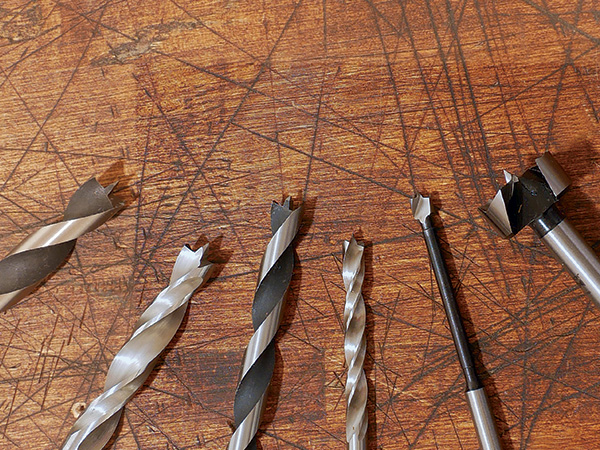
Forming accurate holes can be a critical detail when building a chair, cabinet, wall shelf, cabinet door…well, you get the picture. Drill bits are key to creating those accurate holes. They come in many styles, materials and measurements to help you drill more accurately and effectively.
1. Standard, run-of-the-mill twist bits are OK, but do you know why so many woodworkers prefer brad point bits? Because they work better in wood. These bits are more expensive and a little harder to sharpen, but their effectiveness in wood and common sheet stock can’t be beat. They reduce tearout and are machined to extract wood waste more efficiently than twist bits designed for metal. The brad point also adds a degree of accuracy.
2. Tiny diameter drill bits break — all the time. Whether high quality or inexpensive, both options often snap. Solution? Buy 20 or 30 of each diameter. Don’t let a broken drill bit stop you from installing hinges or other hardware properly. This is one case where quantity is likely more important than quality: when you find a good deal on little bits, jump on it like a duck on a June bug.
3. Speed matters. Most woodworkers understand that there are optimum speeds for large diameter bits like Forstner and paddle bits. But did you know that, even with brad point and regular twist bits, you can slightly affect the diameter of the hole by changing the rpm you are using? If you spin the bit exceptionally fast in a drill press, the diameter will be slightly smaller than if you use a much slower speed.
4. Specialty bits like self-centering bits (such as Vix-Bits) or tapering drill bits with a countersink boring component (such as Insty-Bits®) are effective timesavers. An underutilized bit amoung woodworkers is the step bit. This cone-shaped bit with ever-increasing “stepped” diameter can be super handy in many situations. They come in a variety of sizes.
5. If you need to bore a clean, flat-bottomed hole in a larger diameter, a plunge router and an up-cut spiral router bit may be a better solution than a drill bit. You’ll need to accurately locate the router first, but the flat-bottomed hole the router bit cuts (no brad point or Forstner dimple in the center) is an excellent substitute for a drilled hole.





